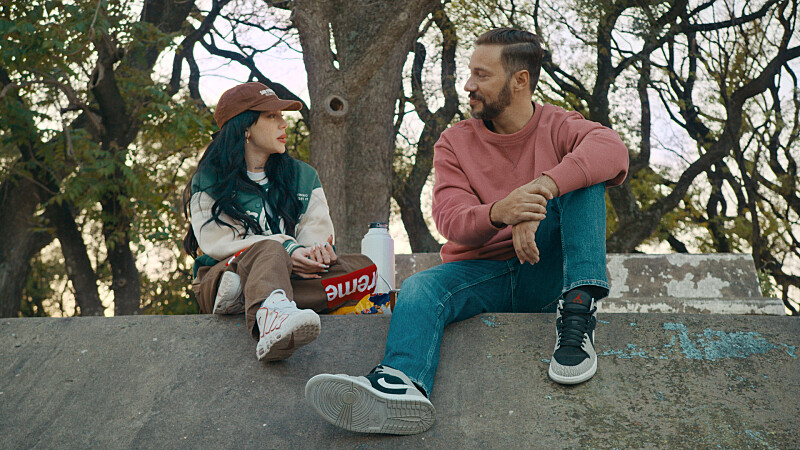De La Calle is an Anthony-Bourdain-style travel show but instead of food, its organizing principle is music – specifically Latin, street music. In each of the eight episodes, the show follows host Nick Barili as he travels to a different country to discover and share the forces, people, and ritmos that make Urbano the cultural force it is today.
Not surprisingly, we start in New York before heading to a variety of Latin American destinations (Colombia, Puerto Rico, Mexico, etc.) with a somewhat humorous stopover in Spain. There, Barili shows how LATAM artists are influencing musicians, while also paying homage to the Romani people. It’s an anticolonial view that permeates the series in surprising, if sometimes ineffective, ways.
For example, Barili takes pains to feature women artists wherever he goes. Their talent and skill are clear but it’s frustrating watching Barili continuously ask them how their gender has affected their path – a question he never levels at the men. To their credit, artists like Cuba’s MC Sekou do bring up misogyny and how they’ve changed their lyrics over time. But it’s hard to reconcile Barili’s clearly feminist intent with the constant clips of that ubiquitous music video prop of the silent, nearly naked women perreando in the background.
De La Calle also takes pains to celebrate Black, Indigenous, and LGBTQ artists, discussing racism and homophobia along the way. Black, brown, and queer folks are tasked with explaining and fixing the problems in the industry while the straight, white guys don’t get any difficult questions about appropriation or privilege.
Barili’s aversion to conflict embedded, De La Calle offers a positive, if sometimes surface-level, celebration of urbano music. Barili traces Latinx contributions from the start of hip hop (New York) through the birth of reggaeton (Panama, Puerto Rico), to its various current iterations (Argentina, Cuba). He doesn’t get to every country but it’s easy to feel proud watching the show – here is Latinx excellence, spitting rhymes, breaking, tagging, and more.
Not every song spoke to me but so many did that I felt compelled to write down the names of numerous artists to check out more of their stuff later. And De La Calle does an excellent job of mixing well-known and up-and-coming folks, giving me glimpses of my current favorites while introducing me to new voices.

Along the way, I was intrigued to learn more about Barili, who is his own character on the show. I’d previously interviewed him when he hosted a series for the Academy, SEEN, highlighting Latinx greats in entertainment. But music is his main love and it was good to see him in his element, exploring Urbano’s history and influences and sharing his own story.
Barili immigrated from Argentina to the US as a child with his mom and he recounts his time being undocumented, how he felt out of place growing up, and how his love of hip hop sometimes exacerbated and sometimes alleviated his ni de aquí, ni de allá sense of identity.
His is a powerful story and one that invites us to both see ourselves in Barili and see our differences. For example, he toggles seamlessly between Spanish and English, never missing a beat despite the varied accents of his interview subjects. As a third-generation, US-born Chicana, my Spanish only went so far and I found myself reading the substitutes for cadences I am less familiar with. And I appreciated that De La Calle, like the genre it’s depicting, makes Spanish the default even as it educates US-based MTV and Paramount+ audiences on Urbano’s history.
The result is a show that doesn’t argue for Urbano’s arrival. No, De La Calle is three steps past that, showing how Latinx music is leading the way, taking up space, and demanding attention. The sound is here to stay.

